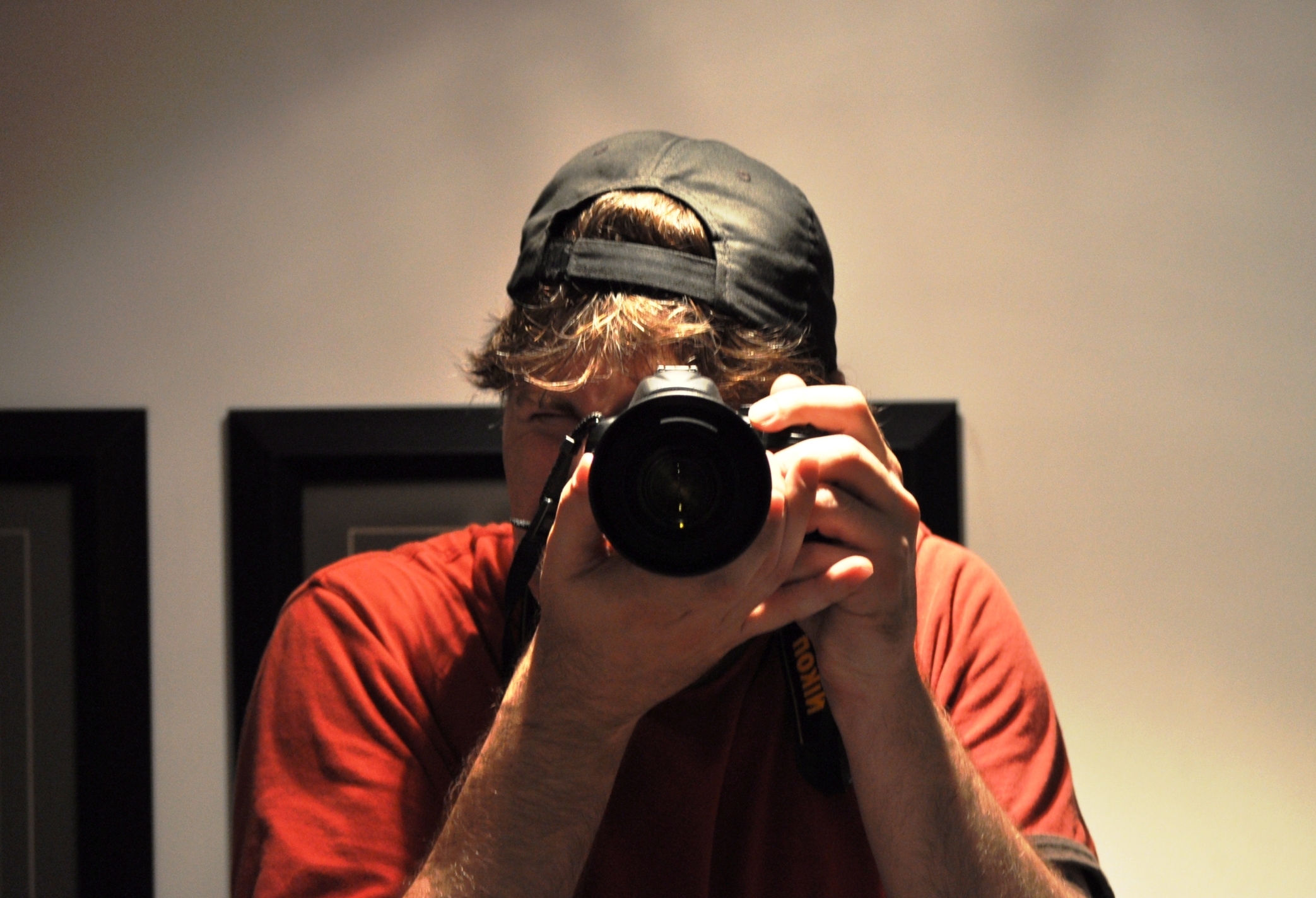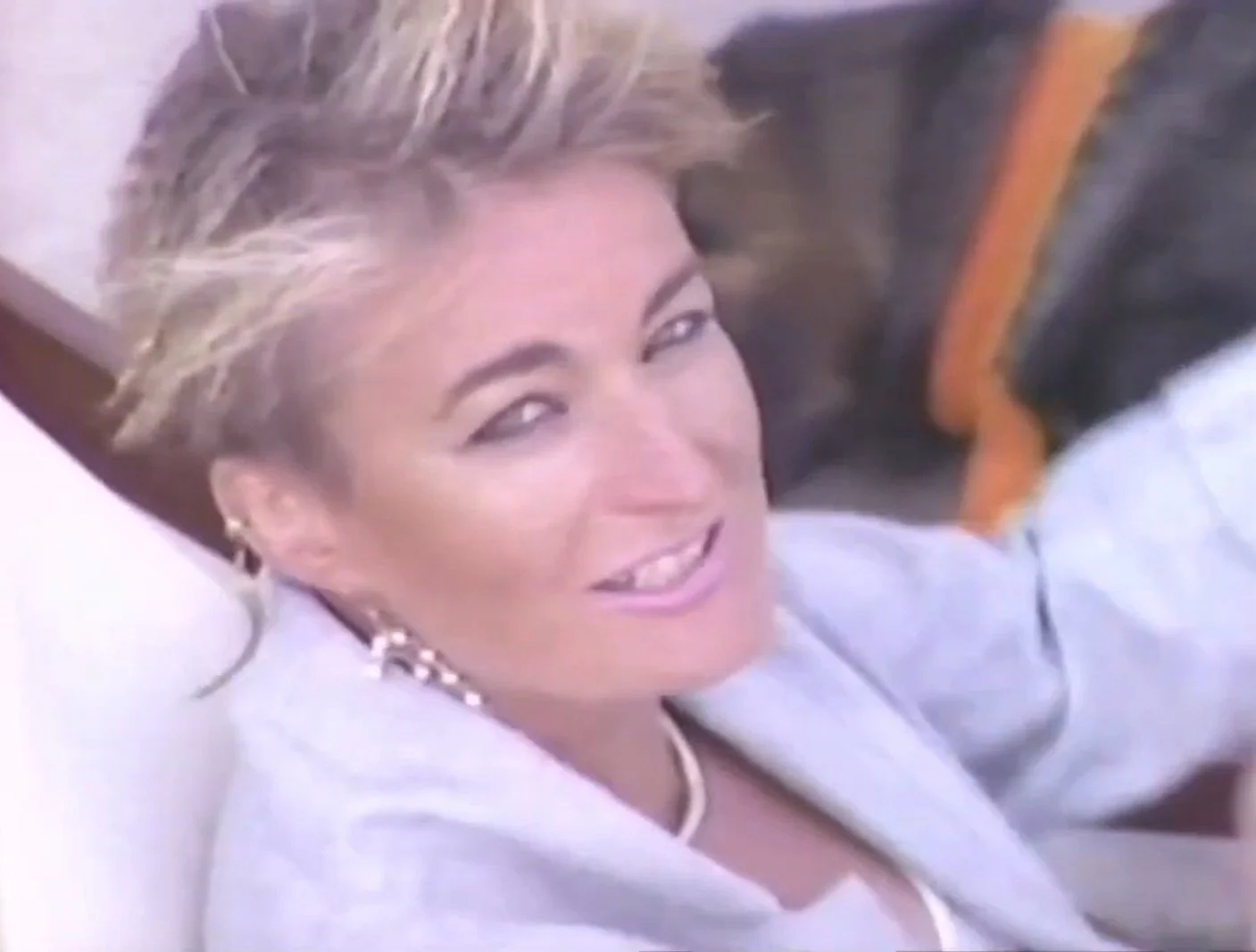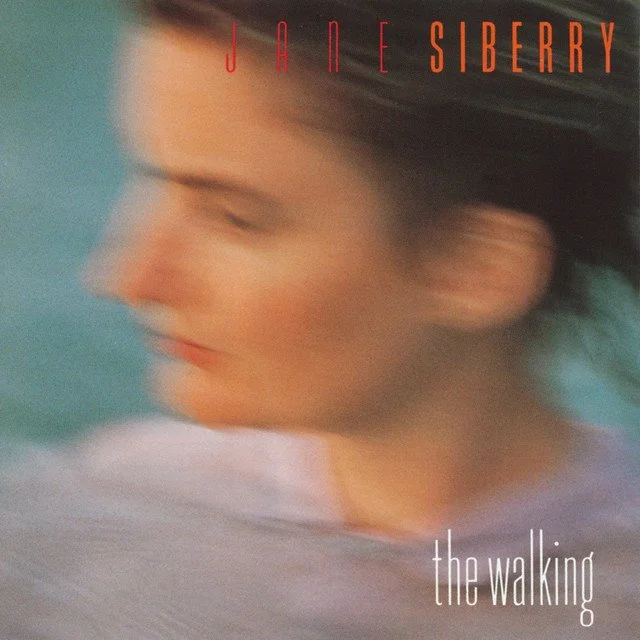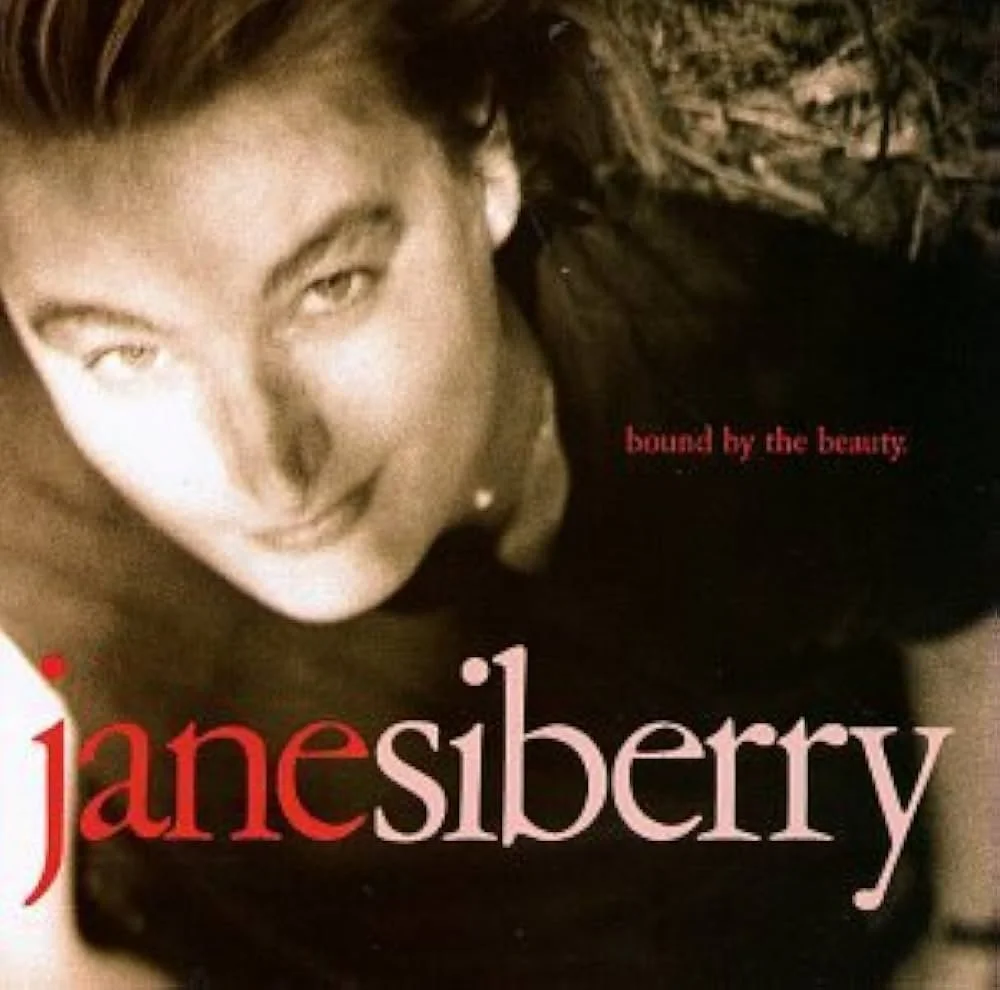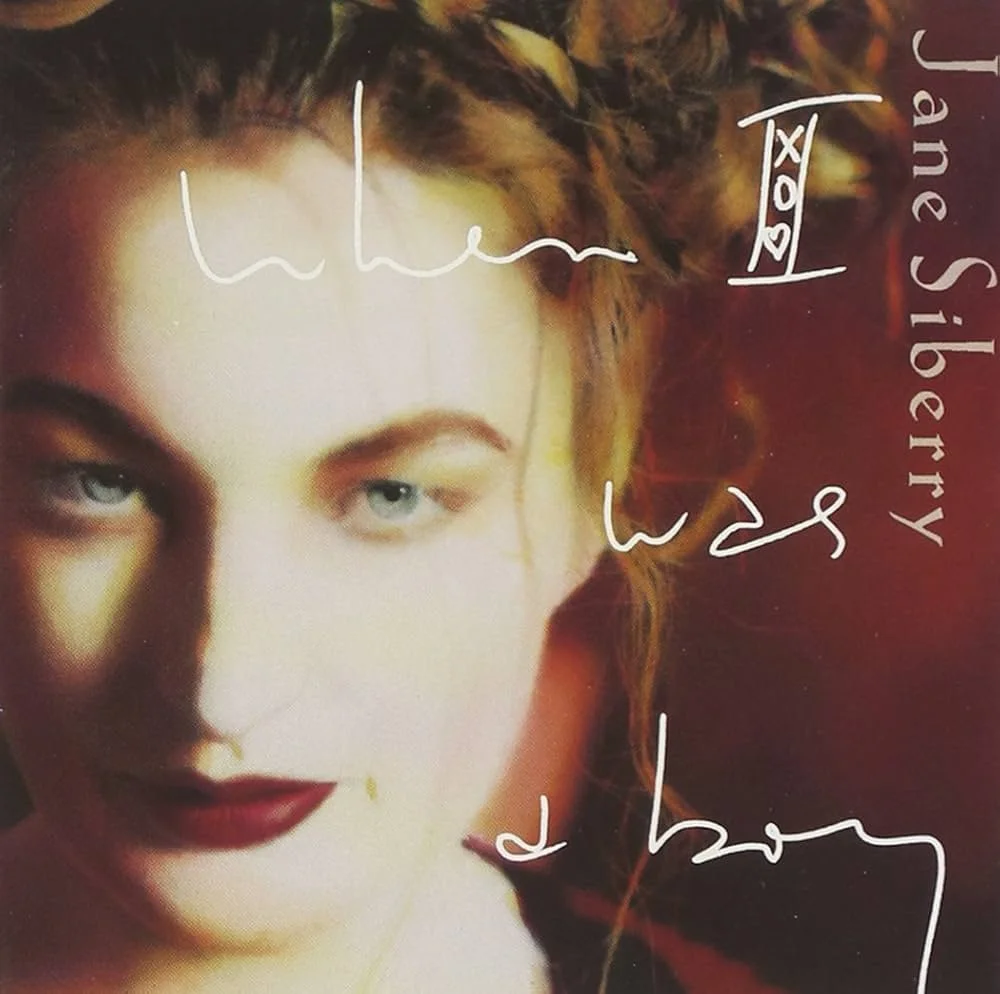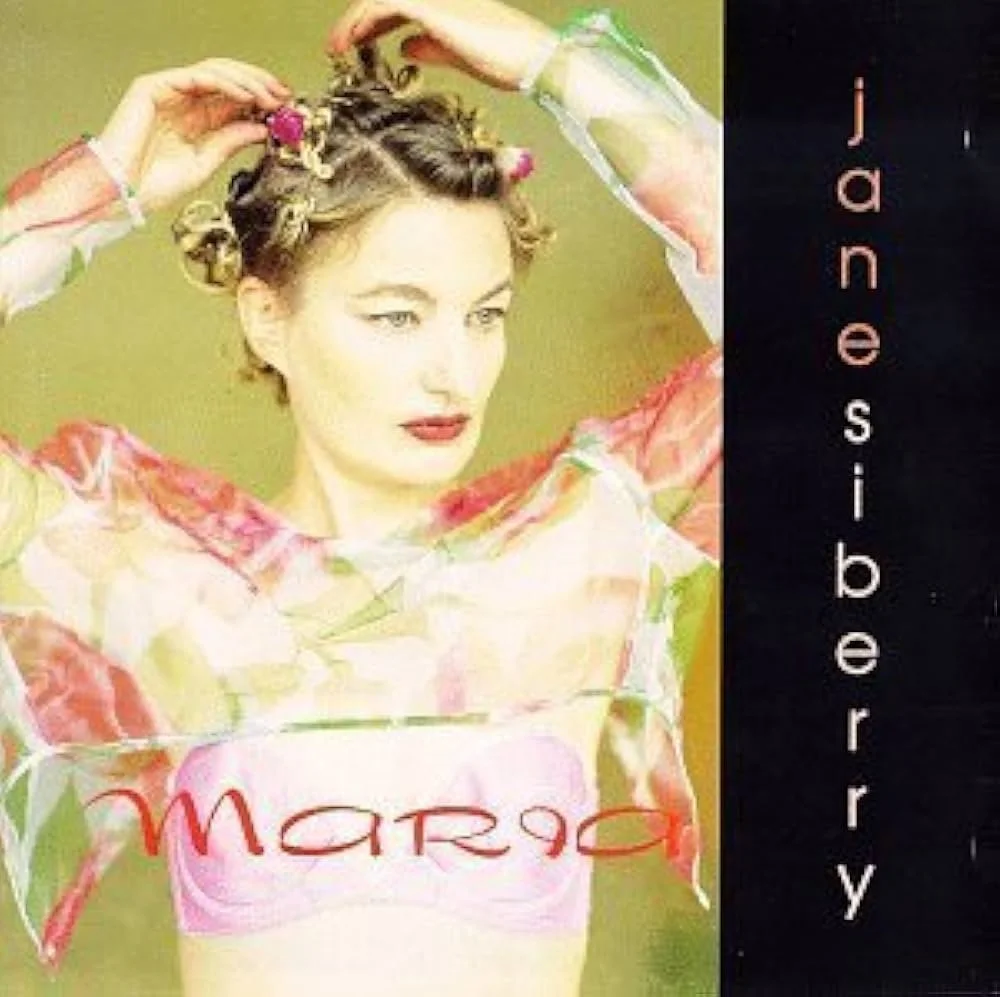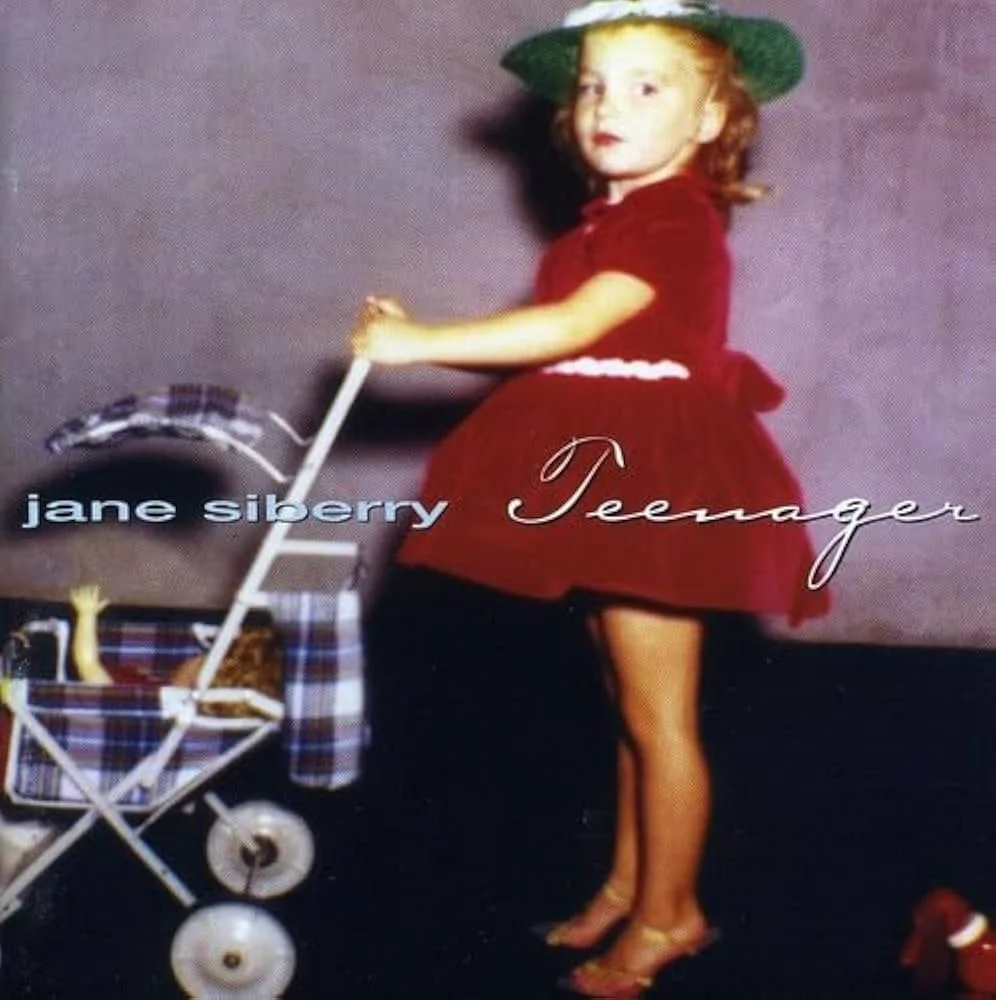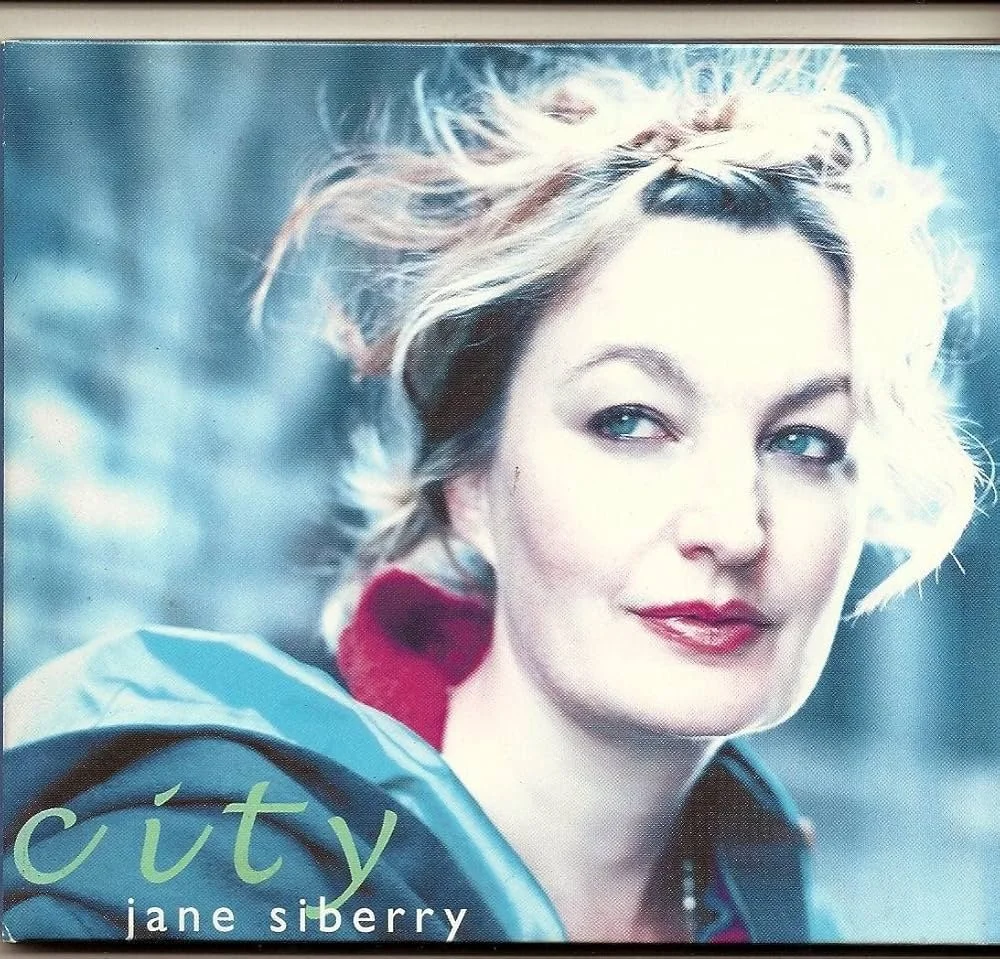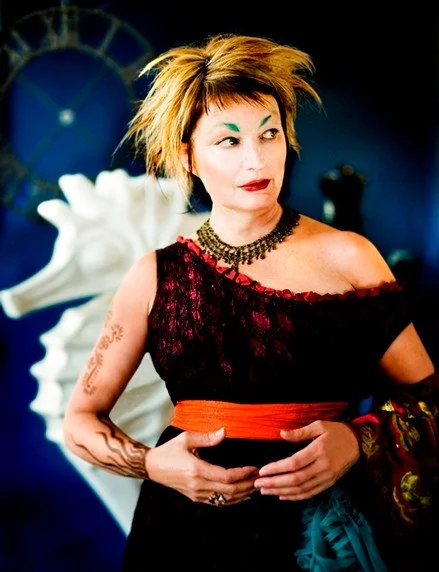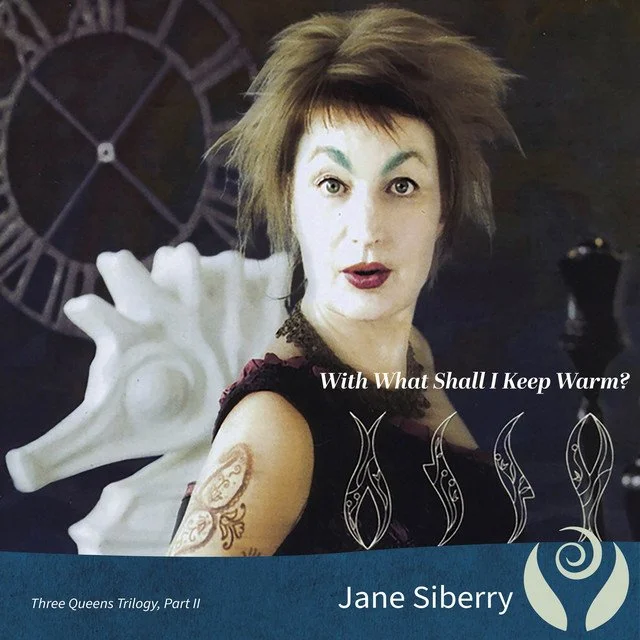I Muse Aloud: A Retrospective of Jane Siberry
Click below on the streaming service of your choice to listen to the playlist as your read along.
As an adolescent growing up in Toronto in the 1980s, one of the constant musical presences was Jane Siberry. A local artist, she was an intriguing contributor to the Canadian musical landscape. Endearingly quirky, mysterious, and creative, if it wasn’t for the supportive Canadian content requirements, she was not an artist primed for popularity. Yet, she had hits that attracted listeners on both mainstream and alternative radio. Since her early string of hit albums and singles – in Canada at least – she has gone on to build a career of enduring critical appreciation and a body of work that has been reliably consistent to her original personality.
The Playlist
“This Girl I Know”
“The Strange Well”
“In the Blue Light”
“I Muse Aloud”
“Symmetry”
“Mimi on the Beach”
“One More Colour”
“Seven Steps to the Wall”
“Map of the World (Part II)”
“The Taxi Ride”
“Ingrid and the Footman”
“The Walking (and Constantly)”
“Bound by the Beauty”
“Something About Trains”
“The Valley”
“The Life is the Red Wagon”
“Calling All Angels”
“Temple”
“Love is Everything”
“It Can’t Rain All the Time”
“Maria”
“See the Child”
“Lovin’ Cup”
“The Long Pirouette”
“When Spring Comes”
“False False Fly”
“Harmonix/I Went Down to the River” (Spotify only)
“The Kiss”
“You Never Know”
“Eden (Can’t Get this Body Thing Right)”
“Hide Not Your Light”
“Walk On Water”
“Living Statue”
“This Girl I Know”; “The Strange Well”; “In the Blue Light” \ Jane Siberry (1981)
Jane was born in 1955 and raised in Etobicoke, Ontario, which at the time was a rapidly growing exurban city to the west of Toronto (it was amalgamated into Toronto in 1998). Her birth name was Jane Stewart, but she adopted the Siberry name from her aunt and uncle. She learned the piano at an early age, largely self-taught, though went on to study music at school. After high school, she studied briefly in Switzerland before returning to Ontario to attend the University of Guelph. Dissatisfied with music studies, she switched her focus and obtained a microbiology degree.
She began performing while in Guelph, joining a group called Java Jive that included bassist, John Switzer, with whom she began a relationship. When Java Jive split, Siberry performed solo as a folk artist while working the typical waitress jobs of a struggling artist (which she would later sing about). Her debut LP was self-titled and issued through a Toronto indie label, Street Records, that was owned by Canadian singer-songwriter, producer, and engineer, David Bradstreet, who also co-produced and played on the LP. While Jane played most of the instruments, she was also joined by Switzer and the LP’s other producer, transplanted Oklahoman, Carl Keesee.
Jane Siberry was released in 1981 and was a good album, revealing many of the characteristic elements of Siberry’s music: interesting phrasing, a mix of spoken and sung vocals, and lyrics that were at turns humourous, perplexing, clever, and thought provoking. Much of the music was built on her folk sound but expanded with solid pop qualities and notes of the burgeoning new wave style, especially in the guitar tones and use of synths. Songs such as, “This Girl I Know,” and “The Strange Well” were good examples of how her varied approaches all came together, while “In the Blue Light” gave notice of her ability to pen a beautiful song, a talent that would ultimately anchor her reputation.
“I Muse Aloud”; “Symmetry”; “Mimi on the Beach” \ No Borders Here (1984)
Jane’s second LP was released in 1984 by Duke Street Records, formed that year by Canadian musician and producer, Andrew Hermant. She also scored a US distribution deal with the Windham Hill label, a subsidiary of A&M Records. No Borders Here marked a significant move into the sounds of the era, blending synth-pop with her acoustic-folk origins. She established a persistent backing band that included her boyfriend, Switzer, as well as Ken Myhr on guitar and Al Cross on drums.
A still of Jane from the “Mimi on the Beach” video
Her quirkiness also continued to flavour the songs in style and sound. This was most evident in the album’s lead single, “Mimi on the Beach,” which became a minor hit in Canada after being championed by college radio and Toronto’s alternative, station, CFNY. I was fourteen at the time and was moving away from hit radio to CFNY, and Siberry was one of the first artists I grabbed onto, buying the album and playing it often. CFNY placed No Borders bHere at #10 in its year-end chart and, in its annual awards show, The CASBYs (Canadian Artists Selected By You), honoured Siberry with the ‘Best Female Vocalist’ award.
Indeed, Jane’s colourful, clever, and humourous lyrics were a central component to the album. “Mimi” alone was a fitful list of contradictory images and phrases, including the instantly catchy and memorable, “And that’s a surfboard, not a yacht.” Admittedly, I also thought the title lyric was, “meet me on the beach,” until I saw it written. “The Waitress” was an ironic take on her former profession, and there couldn’t have been a better self-description than, “I Muse Aloud.” Personally, I was most taken with smart imagery of, “Symmetry.”
Full of hooks, beautiful passages, toe-tapping rhythms and her mix of spoken and sung lyrics, the album was a delight. “You Don’t Need” was another beautiful ballad, balancing the eccentric turns of “Extra Executives,” or the moody atmosphere of the album’s closer, “Map of the World (Part I).” The LP was reminiscent of fellow Toronto band, Martha & The Muffins, or the rhythm-based, art-rock of New York’s Talking Heads. She was also often compared to Kate Bush, as a similarly creative and expressive songstress. Siberry was solidly established as a part of the new wave movement as it was peaking in popularity.
“One More Colour”; “Seven Steps to the Wall”; “Map of the World (Part II)”; “The Taxi Ride” \ The Speckless Sky (1985)
The following year, with the same band and labels, she built on her success with her third album, The Speckless Sky. CFNY placed it at #19 in its year-end chart and again honoured her with a CASBY award, this time for ‘Best Album.’ Siberry continued her strong presence in my listening habits that year.
The lead track and single, “One More Colour,” was – and is – Jane’s most polished and pop-oriented song. Melodic, sweet, and bright, the song was Siberry’s breakthrough, reaching the Canadian top forty. Her skill with moving, atmospheric ballads continued with “The Empty City,” “Vladimir Vladimir,” and the closing track, “The Taxi Ride.” Off-kilter rhythms were again pervasive in “The Very Large Hat” and “Mein Bitte.” Her graceful melodies and frenetic rhythms came together in “Seven Steps to the Wall” and “Map of the World (Part II).”
Siberry was a unique artist that could appeal to pop audiences while still offering the creative and eccentric turns that was appreciated by fans of alternative music. Her sweet, often high-pitched vocals were not for everyone but still impressed with her talent. An unlikely pop star, she was poised to become one of Canada’s leading artists. This was no more evident than her moving from Windham Hill to Reprise Records in the US, a sub of major label, Warner.
“Ingrid and the Footman”; “The Walking (and Constantly)” \ The Walking (1987)
In an approach that would become prevalent to Siberry’s career, she made a markedly non-commercial turn with her fourth LP, The Walking. It was the third album with the same line-up, and while John Switzer still participated, he and Jane had ended their relationship, a contributing element to the album’s themes. It was also released again through Duke Street and Windham Hill, who were expecting Jane to continue her rise in the music world, but with a more challenging LP for mainstream audiences, it was not to be.
The album’s opening track, “The White Tent The Raft,” held all of her wonderfully endearing blends of melody and characteristic, rhythmic turns, but at over nine minutes in length and journey-like in its phases, was not ready-made for the radio. Similarly, the large pop expanse of “Ingrid and the Footman” had to be reduced from its seven-minute album length to a radio-friendly edit. The title track was another brooding, beautiful ballad, but at over six-minutes was again not commercially viable. Over the album’s eight songs, only one clocked in at under six minutes.
But across the album the listener was rewarded with a more mature, thoughtful, and expansive iteration of the Jane Siberry sound. It was less in tune with alternative fans and her exposure through CFNY declined. Neither did it capture mainstream audiences due to the lack of pop radio exposure, even with the Canadian Content requirements. So, despite being a solid and more musically ambitious album, it was a step back for her career commercially.
“Bound by the Beauty”; “Something About Trains”; “The Valley”; “The Life is the Red Wagon” \ Bound by the Beauty (1989)
Siberry returned two years later with her fifth album, Bound by the Beauty. She parted ways with Duke Street, leaving Reprise to cover her across North America. Switzer and Myhr were retained on bass and guitar, but the rest of the line-up changed, while also featuring a wider list of guest contributors, including fellow Canadian singer\actress, Rebecca Jenkins.
The album shifted her back to a more pop oriented approach, with only two of the ten tracks extending past five minutes. There were less of the quirkier elements of her rhythms and sounds, but lyrically had greater elements of whimsy, with songs about hockey, her dog, and trains.
The LP’s first single was the wonderful, “The Life is the Red Wagon,” another expansive, melodic tune that evidenced her maturing songwriting. The title track was the album’s opening song and the second single. It rivalled “One More Colour” as her most pop styled entry but failed to reinvigorate popular interest in her music. The LP only reached #80 in the Canadian chart.
With, “The Valley,” Siberry’s skill with the ballad was taken to a new level. Adding depth, richness, and sweeping, melodic passages, the track moved from quiet contemplation to inspirational choruses. And not to take anything away from Jane’s version, I must admit that k.d. Lang’s take, offered on her wonderful 2004 tribute album to Canadian music, Hymns of the 49th Parallel, delivered it in impressive fashion, further revealing the song’s epic beauty. Any artist should be thrilled and honoured to get the k.d. Lang treatment, since her covers are often definitive.
“Calling All Angels” \ Until the End of the World soundtrack (1991)
Speaking of k.d. Lang, Siberry teamed up with her on the song, “Calling All Angels,” included in the 1991 soundtrack to the Wim Wenders sci-fi film, Until the End of the World. Bringing together these two leading female Canadian voices was a match made in heaven. Jane’s higher tone mixed with the richness of Lang was perfect. k.d.’s usual collaborator, Ben Mink, played viola. It was released as a single in 1992 and reached the Canadian top ten to become Jane’s best charting entry. It has arguably become Jane’s signature song.
Written by Siberry, the tune was another of her exquisite ballads. It had a simple accompaniment, paced by a booming bass drum underpinning the light strains of an acoustic guitar and the strings, which allowed the majestic and lilting vocals of Jane and k.d. to ring through with a sense of lament and wonderment. Jane carried most of the vocal, with Lang providing backing and accents on the choruses. The two weaved in a round over the final third of the song, complementing each other perfectly.
“Temple”; “Love is Everything” \ When I Was A Boy (1993)
“Calling All Angels” was the only release from Siberry over an extended break, the first of her career. She wrote consistently over that period but also took time to shake a problem with alcohol. She also collaborated more widely, with only Ken Myhr carrying through from her prior line-ups. Therefore, 1993’s When I Was A Boy, her sixth LP, had a long list of contributors. Brian Eno came on board to produce and play while Jenkins again guested, along with another noted Canadian chanteuse, Holly Cole. John Switzer also made an appearance, playing bass on one track.
The musical world had gone through significant shifts over the prior four years since her last LP. Grunge was taking over the charts, club music was ascendent via acid house, and rap was asserting itself as a rival to chart primacy with the mainstays of pop and R&B. The guitar was in its final heyday as shoegaze was having a moment in the underground and Britpop was about to launch in the UK. It was a challenging environment for an artist like Siberry, and her response was to again evolve her sound, mixing in beats for the first time.
This was most evident in the album’s opening track and one of its singles, “The Temple.” Expanding the formula employed for “Calling All Angels” (also included on the LP), booming beats in the chorus offset the quiet, jazzy, murmuring verses. “The Temple” was catchy, had the eccentric Siberry touches, and blended lovely melodies over the rhythm heavy foundation. It was perhaps the last true pop song she’d deliver in her career.
“Love is Everything,” the album’s third track, following “Calling All Angels,” was another contribution towards her growing list of fantastic ballads. Also exquisitely covered by Lang on her Hymns of the 29th Parallel, the track had all the wonderful turns and sweeping, haunting passages emblematic of Siberry’s writing.
Beats and moody turns appeared elsewhere in the LP, particularly in the tracks, “All the Candles in the World” and “An Angel Stepped Down (and Slowly Looked Around).” While not quite as quirky as her earlier work, the album certainly had Jane’s unique personality and spoken interludes throughout.
When I Was A Boy was a critical success and a modest commercial success. It was the last of her career to bring her name and music to a wider audience, both in Canada and internationally – though she had one more contribution of note to offer.
“It Can’t Rain All the Time” \ The Crow soundtrack (1994)
The Crow was a film in 1994. I saw it in theatre and thought it was terrible, but it became a beloved cult film, especially for those who love a goth vigilante superhero. It was also notorious for the death of its lead actor, Brandon Lee (son of famed martial arts actor, Bruce Lee), who was shot by a prop gun accidentally loaded with a real bullet. The movie’s most redeeming feature was its killer soundtrack, featuring an impressive line-up of mostly original tracks from a who’s who of goth and industrial artists, and… Jane Siberry, the one artist clearly not like the others.
Jane’s song on the soundtrack was, “It Can’t Rain All the Time,” which was co-written by Graeme Revell, who also did the score for the film. He had also worked on Until the End of the World and thus had a connection to Siberry. It was suitably moody to fit with the film but wasn’t quite as dark as the rest of the soundtrack. It strongly resembled the style of “Calling All Angels,” sparse and simple with an echoing beat. The popularity of the film gave her a final trumpeting of her subtly gorgeous songwriting talent.
“Maria”; “See the Child”; “Lovin’ Cup” \ Maria (1995)
Jane’s seventh album arrived a year later. Maria was jazz-infused, rich with piano, trumpet, and stand-up bass. The album closed with a twenty-minute song, “Oh My My.” Ever the enigmatic artistic presence, she was clearly following her muse independent of the larger musical trends of the ‘90s, which was seeing the last heyday of rock.
The album was performed by an all-new line-up, the first to completely divorce her from any past collaborators. Esteemed jazz pianist, Tim Ray, co-wrote the album and his playing dominated the LP. The album’s opening song was the title track, featuring sultry trumpet over a lively piano and which immediately gave notice of the album’s nature. The second track was the tightly woven, “See the Child,” that brought frenetic touches to her loungey jazz tones. “Lovin’ Cup” was a fun, rhythmic, take on her new sound that reminded me of Lyle Lovett. Therefore, I wasn’t too surprised when I learned that Tim Ray played with Lovett for fifteen years.
Artists in the post-commercial phase of their career will often experiment more and, as a result, offer up some surprising and rewarding music – that unfortunately, will be largely ignored. Maria was a consummate example. Alas, it marked the end of her relationship with Reprise records, who likely didn’t care for her new musical direction. Jane struck out on her own, never to look back.
“The Long Pirouette”; “When Spring Comes” \ Teenager (1996)
The first sign of Siberry’s new independence was the formation of her own label, Sheeba Records, started in 1996. The same year she released her next LP through the label, using material recorded during the Maria sessions. She’d taken advantage of remaining studio time to record some tracks she’d written in her youth, and thus the LP’s title, Teenager. Separated from the jazz of the prior album, these were all solo tracks featuring just Jane singing with acoustic guitar or piano.
It wasn’t just that the songs were drawn from her pre-career work, it also returned Siberry to her folk roots, the music she’d originally explored before shifting into the pop and new wave styles of her early LPs. “The Long Pirouette” was a nice example of the album’s guitar-folk style, while “When Spring Comes” was a piano track. Most of the songs also included spoken introductions or reflections at the end of the track. It made Jane’s work as personal as it had ever been. Not surprisingly, given its independent release, the album did not gain much attention.
Also in 1996, Jane relocated from Toronto to New York, seeking a new environment to inspire her work. She recorded a series of concerts at the famous Greenwich club, The Bottom Line. The music from the shows were released over three albums: Child: Music for the Christmas Season (1997), Lips: Music for Saying It (1999), and Tree: Music for Films and Forests (1999). They were collected into a 1999 box set known as, The New York City Trilogy.
In 1997, she released an album of ambient noises and recordings done during a day in New York. Naturally titled, A Day in the Life, it further showed Siberry was operating in her own milieu, exploring and sharing her unique and unbound artistry.
Given the decidedly non-commercial nature of her recent releases, Sheeba, was a struggling enterprise financially. This forced Jane to return to Toronto and assume all responsibilities for the label. Consistent with this approach, her next series of performances were small, intimate occasions that mixed workshops and playing in non-traditional, salon type venues. She also issued a book of poetry, the first of several books she would put out over the coming years.
“False False Fly” \ Hush (2000)
“Harmonix/I Went Down to the River”; “The Kiss” \ City (2001)
Her tenth album was then, not surprisingly, a mostly solo, acoustic effort. Featuring a list of folk and gospel songs, Hush saw the Siberry style applied to several standards. “False False Fly” was based on a British ballad, “The False Knight Upon the Road,” in which Jane changed the role of the boy to a girl. Other tracks were, “Jacob’s Ladder,” Swing Low, Sweet Chariot,” and “Ol’ Man River.”
Among all the activity of the prior several years, Siberry had continued to collaborate and record with various artists, some of which had been issued on soundtracks and compilations. This material was collected into a compilation LP, City, released in 2001. It included “It Can’t Rain All the Time,” the first it appeared on a Siberry album, and “Calling All Angels.” “The Bridge” was a duet with Joe Jackson, “Innig” was performed with English violinist, Nigel Kennedy, and “She’s Like A Swallow” was with French composer and producer, Hector Zazou.
The album opened with two tracks recorded with Peter Gabriel at his Real World Studios. The first was, “My Mother is Not the White Dove,” a nice ballad that seemed to balance Siberry’s song style with the ambience and feel of Gabriel. The second track was, “Harmonix / I Went Down to the River,” Jane’s boldest foray into modern techno and electronic music, mixing beats, backing harmonics, repetition, and various samples into one of the most distinctive tracks of her career – certainly when compared to the rest of her discography.
The album closed with, “The Kiss,” a song recorded with Ghostland, a collection of backing musicians of Sinéad O’Connor, and the London Metropolitan Orchestra. It was a typically beautiful ballad with Jane’s distinctive pacing and melodic turns.
If there was a chance for Siberry to regain any broader appeal for the new century, City would have been her best chance. But again, with the meagre resources of her independent, one-woman label, it couldn’t break through to wider attention.
“You Never Know” \ Dragon Dreams (Three Queens Trilogy, Part I) (2008)
“Eden (Can’t Get this Body Thing Right)” \ With What Shall I Keep Warm? (Three Queens Trilogy, Part II) (2009)
The next release was in 2003, a live Christmas album, Shushan the Palace: Hymns of Earth, featuring hymns and classical pieces. Her career continued on its novel path but even by her standards, the next period took things to new levels of reinvention as she clearly sought to make sense of her career, her place in the musical universe, and to find a new sense of herself.
In 2006, at age fifty, Jane set out on her biggest reincarnation yet. She shut down Sheeba Records, sold all her possessions on eBay, sold her home, and changed her name to Issa, a feminine variant of Isaiah. She wrote songs, poetry, and gave lectures about her new approach to life. Her reinvention was, by her own account, a time of prolific creativity.
Her first release as Issa was in 2008 and the initial offering of a new trilogy, Three Queens. Resurrecting Sheeba for the release, Dragon Dreams was her twelfth album. A mix of music and stories, featuring her usual mix of sung and spoken vocals, it saw a return to fuller instrumentation with drums, bass, and horns. “You Never Know” had a bluesy-pop style, while “You Had A Good Thing” was a soulful, jazzy, rappy, rhythmic track similar to Fiona Apple’s style.
The second instalment of the trilogy was released in 2009 with the LP, With What Shall I Keep Warm. Issued under both names, Issa and Jane Siberry, she shortly after revealed she’d returned to the Siberry name. It was an LP that saw her largely return to the full indie-pop styles of her earlier career, combining her ballads and acoustic styles with experimental mixes of beats and samples. Never an artist destined for a return to commercial success, nevertheless the album offered more for the casual fan to absorb that most of her material issued since the start of the new millennia. The album’s opening track was, “Eden (Can’t Get this Body Thing Right)”, which exemplified the electro-beat style of many of the album’s tracks.
The concluding LP of the trilogy, Meshach Dreams Back, was released in 2011 and this time only under her Siberry name. It had more shifts and variances in styles as she mixed spoken and sung vocals as much as ever. It played more like a stage play than a musical performance. Passages from her prior work appeared, such as a reprise of “It Can’t Rain All the Time” in the title track.
By 2010, I had lost track of Siberry since her appearance on The Crow soundtrack. The only mention I’d heard of her over that time were the recent activities – the selling of her possessions, the name change to Issa, and that she had been doing a ‘micro-tour’ of small cafés and the homes of her fans. These activities painted a picture of an eccentric artist that had, if not given up on her career, was certainly pushing a puzzling and any-establishment persona that was not likely to return her to a place of legitimate attention and critical appraisal.
But then I heard she was making all of her music available for download… for free. While the entire music industry had needed to reckon with the realities of digital music, file sharing, and making music widely available on the internet, few had leaned into the spirit of making music as ‘free’ as Jane. Only Radiohead’s release of the 2007 album, In Rainbows, comes to mind as a comparable gesture. I happily downloaded Siberry’s entire library and caught up on her career, enjoying the discovery of a lot of good music over the prior two decades. It reminded me of how compelling and creative an artist she was, reinvigorating that initial rush of fandom I’d had for her in my teens.
“Hide Not Your Light”; “Walk on Water” \ Ulysses’ Purse (2016)
“Living Statue” \ Angels Bend Closer (2017)
Jane’s most recent album was crowdfunded and released in 2016, at this point almost ten years ago. Ulysses’ Purse was familiar, with the structures, instrumentation, and mix of her vocal techniques now so familiar. It was a pleasant album, but her LPs were now better taken in as ambience, as a mood-setting and companion to laid back afternoons at the cottage or reading a book in a cozy corner of your house.
“Hide Not Your Light” opened the album and exemplified that familiar spirit of Siberry’s music. Parts of the song can be easily linked to her output of the ‘80s, ‘90s, or early 2000s. kd Lang once again contributed vocals and it was the closest track the album had to a marketable single. “Walk on Water” recalled the moods of her ‘90s ballads. Both of these tracks originally appeared in different form on her prior LP, With What Shall I Keep Warm. The album closed with another collaboration with Lang, “Let Me Be Your Living Statue.”
The album was then re-worked and re-released late in 2016 as, Angels Bend Closer. It included all but three songs from Ulysses Purse and added four new tracks. “Living Statue” was issued as a single, shortened in title and duration. Critics reviews suggested the new version of the album improved on the first, but it is not available in Canada on streaming services, so I’m unable to check it out.
In 2020, a live album, A World Without Music, was released in digital format only and available only via Jane’s website – which now charges for downloads. Otherwise, there has not been any new music from her.
In November 2024, I saw Jane in concert in a small venue. It was surprising even to me that I’d never seen her before. The show was pure Jane, a meandering ninety-minute excursion of talk and singing, with her solo on guitar and piano. She weaved the music through extended, seeming stream of conscious recitations of lyrics, following a narrative that she summarized for us but I must admit had trouble following. Excerpts of her hits were featured, but not in their entirety save for the encore, “Calling All Angels.” The beauty of that song, and her lovely delivery, made the show worthwhile despite much of the performance being mostly tedious and unfulfilling.
My pic of Jane, performing at Hugh’s Room Live, November 2024
But I expected no less, as the show exemplified the exploratory, experimental, distinctive, and at turns perplexing and rewarding nature of Jane Siberry’s career. She has been as unique, creative, and forceful an artist as Canada has ever produced. She has contributed several of our country’s most beautiful songs, proving her talent as a singer, performer, and writer will be recognized more widely than the limited popularity and chart success of her releases. As one of the few local artists I embraced in my youth, Jane is like an old friend, fondly cherished.
